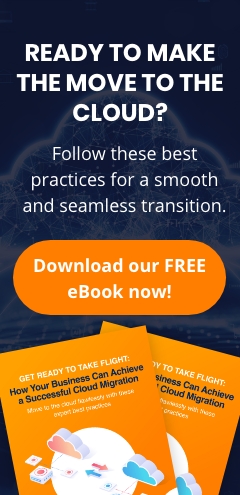A remote working environment is great for fostering happy and agile employees, but this distributed workforce model comes with its own challenges. Data loss, in particular, is a high risk in these kinds of working arrangements if your team is not prepared for it.
Here are the best data loss prevention strategies that you can implement to start immediately reducing your business’s risks.
What is data loss, and why is it so common in remote work environments?
As the name suggests, data loss is an event in which your company’s data is deleted, corrupted, stolen, or locked down by ransomware. These kinds of events can be accidental or intentional, and can result from:
- Hardware failure
- Malware, especially ransomware
- Accidental deletion by careless worker
- Sabotage by disgruntled employees or other insider threats
- Corruption caused by incompatible or outdated software
Data loss in distributed workforces
Remote work environments are at high risk of data loss events for a variety of reasons, including:
- Limited cybersecurity: Workers’ home networks are less secure than your highly controlled office network, and personal devices may not have the required security features.
- More phishing vectors: Because most, if not all, communication is online in a remote work setup, scammers have more opportunities to launch phishing attacks via email, chats, or even video and audio calls.
- Limited enforcement of policies: It’s much more difficult to enforce security and data backup protocols and best practices in a remote environment.
- Difficult visibility: Similarly, your IT services provider will have a harder time monitoring your data and traffic, as your systems are connected to multiple home networks.
Data loss prevention strategies in remote work environments
While the risks of data loss are increased in a distributed workforce model, this does not mean it has to stay that way. As with your office network, you can implement tools and strategies to minimize your risk and continue to reap the significant benefits of remote work.
Implement strong access controls
Make sure that employees only have access to the information necessary for their role. Role-based access control (RBAC) lets you restrict sensitive files, preventing unintentional edits or mishandling. Enabling multifactor authentication (MFA) also adds an extra layer of protection beyond just passwords.
Encrypt data both at rest and in transit
All company data — whether it’s stored on a laptop, in cloud storage, or being sent over email — should be encrypted with automated tools to prevent interception. Onboard encryption ensures that if a device is lost or stolen, unauthorized users are kept from accessing the data.
Deploy endpoint protection tools on all devices
Every laptop, phone, or tablet used to connect to your systems is an endpoint and thus a vector for data breaches. They must all be protected with up-to-date antivirus software, firewalls, and, if applicable, mobile device management (MDM) tools.
MDM lets you remotely wipe company data from lost or stolen devices and enforce security policies, such as requiring strong passwords or preventing file downloads to unapproved storage.
Use cloud-based backup solutions
Cloud-based data backup tools allow for secure, scheduled backups that don't rely on users remembering to save their work. Make sure your solution includes version control so you can restore previous versions of files in case of corruption or ransomware attacks.
Educate employees about phishing and social engineering
Human error remains one of the top causes of data loss. A team member might unknowingly click a malicious link or fall for a well-crafted scam. Regular cybersecurity awareness training can help employees recognize suspicious emails, avoid unsafe downloads, and follow safe online practices.
Monitor and audit data usage
Invest in tools that allow you to track how data is accessed, shared, and moved across your systems to prevent blindspots. Look for unusual behavior such as large file transfers, access attempts from unfamiliar IPs, or repeated login failures. These signs can help you catch a breach before it becomes a major problem.
Create an advanced data loss prevention policy with input from experienced consultants
Partner with outsourceIT’s seasoned cybersecurity consultants and we’ll help you craft a personalized data loss prevention (DLP) policy for your business. It will explain to you and your workforce what kinds of data are sensitive, how to store and share it securely, and what to do in case of a breach.

